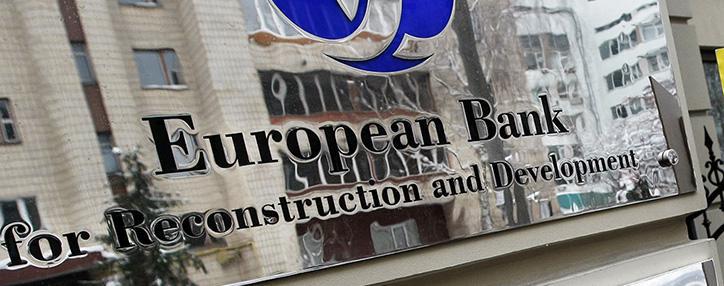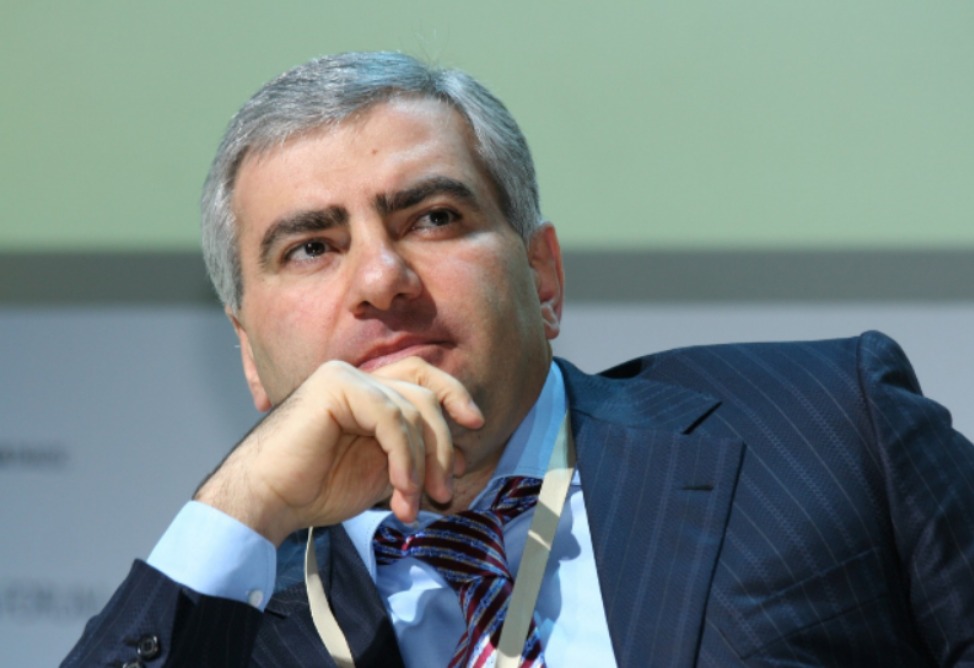EBRD expects Armenian economy to grow by 2.5 percent in 2017
10.05.2017,
16:10
GDP growth in Armenia slowed from 3 per cent in 2015 to 0.2 per cent in 2016, driven by a decline in construction and agriculture, the European Bank for Reconstruction and Development (EBRD) said in its latest Regional Economic Prospects in EBRD Countries of Operations May 2017 report.

YEREVAN, May 10. /ARKA/. GDP growth in Armenia slowed from 3 per cent in 2015 to 0.2 per cent in 2016, driven by a decline in construction and agriculture, the European Bank for Reconstruction and Development (EBRD) said in its latest Regional Economic Prospects in EBRD Countries of Operations May 2017 report.
It said also that in the first quarter of 2017, economic indicators pointed to growth in industrial output, external trade and services, while agriculture and construction performance remained weak. Inflation of consumer prices remains slightly negative, allowing for further monetary easing.
External adjustment helped to maintain a stable dram-US$ exchange rate, with the current account deficit stable at 2.7 per cent of GDP in 2016. Remittances, which account for approximately 13 per cent of GDP, fell further by 7 per cent in 2016, but the pace of reduction was mitigated by a recovery in money transfers from Russia.
The report says that a sizable fiscal consolidation is planned in 2017 to curtail the public debt-to-GDP ratio, which increased to an estimated 57 per cent of GDP at the end of 2016. The conflict in the Nagorno-Karabakh region presents a risk to the growth outlook. We forecast Armenia’s economy to grow by 2.5 per cent in 2017 and 3.0 per cent in 2018.
According to EBRD's report, the Russian GDP is expected to remain at 1.2%. It also preserved its growth forecast for Kazakhstan at 2.4%, for Uzbekistan at 6.2%, for Ukraine at 2% and for Georgia at 3.9%. At the same time, it worsened the forecast Azerbaijan - from a growth of 1% to a decline of 0.5%, Belarus - from a growth of 1% to a decline of 0.5%, Tajikistan - from 4.1% to 3.8% respectively and for Turkmenistan - from 4.1% to 3.8% respectively. The forecast for Moldova was upped from 2.5% to 3% growth and that for Kyrgyzstan - from 2.6% to 3.9%.
Overall the report says that economic growth is expected to pick up across the EBRD regions this year and next, supported by higher oil prices and Russia’s recovery from recession. On the back of developments in Russia and on the commodity markets, growth in eastern Europe and the Caucasus is also forecast to accelerate and activity in Central Asia is likely to stabilize at slightly higher levels.
On average, economic growth in the 36 EBRD countries of operations is seen rising to 2.4 per cent in 2017 and to 2.8 per cent in 2018, compared with expansion of 1.8 per cent last year.
The report says the latest forecasts are subject to major risks related to geopolitical tensions in and around the region, set against a backdrop of increased political uncertainty. “The economic outlook for the region remains materially affected by terrorism, geopolitical tensions and the refugee crisis. Over the last six months Egypt, Jordan, Russia and Turkey saw several terrorist attacks while Syria remains in a humanitarian crisis.” -0-
It said also that in the first quarter of 2017, economic indicators pointed to growth in industrial output, external trade and services, while agriculture and construction performance remained weak. Inflation of consumer prices remains slightly negative, allowing for further monetary easing.
External adjustment helped to maintain a stable dram-US$ exchange rate, with the current account deficit stable at 2.7 per cent of GDP in 2016. Remittances, which account for approximately 13 per cent of GDP, fell further by 7 per cent in 2016, but the pace of reduction was mitigated by a recovery in money transfers from Russia.
The report says that a sizable fiscal consolidation is planned in 2017 to curtail the public debt-to-GDP ratio, which increased to an estimated 57 per cent of GDP at the end of 2016. The conflict in the Nagorno-Karabakh region presents a risk to the growth outlook. We forecast Armenia’s economy to grow by 2.5 per cent in 2017 and 3.0 per cent in 2018.
According to EBRD's report, the Russian GDP is expected to remain at 1.2%. It also preserved its growth forecast for Kazakhstan at 2.4%, for Uzbekistan at 6.2%, for Ukraine at 2% and for Georgia at 3.9%. At the same time, it worsened the forecast Azerbaijan - from a growth of 1% to a decline of 0.5%, Belarus - from a growth of 1% to a decline of 0.5%, Tajikistan - from 4.1% to 3.8% respectively and for Turkmenistan - from 4.1% to 3.8% respectively. The forecast for Moldova was upped from 2.5% to 3% growth and that for Kyrgyzstan - from 2.6% to 3.9%.
Overall the report says that economic growth is expected to pick up across the EBRD regions this year and next, supported by higher oil prices and Russia’s recovery from recession. On the back of developments in Russia and on the commodity markets, growth in eastern Europe and the Caucasus is also forecast to accelerate and activity in Central Asia is likely to stabilize at slightly higher levels.
On average, economic growth in the 36 EBRD countries of operations is seen rising to 2.4 per cent in 2017 and to 2.8 per cent in 2018, compared with expansion of 1.8 per cent last year.
The report says the latest forecasts are subject to major risks related to geopolitical tensions in and around the region, set against a backdrop of increased political uncertainty. “The economic outlook for the region remains materially affected by terrorism, geopolitical tensions and the refugee crisis. Over the last six months Egypt, Jordan, Russia and Turkey saw several terrorist attacks while Syria remains in a humanitarian crisis.” -0-



